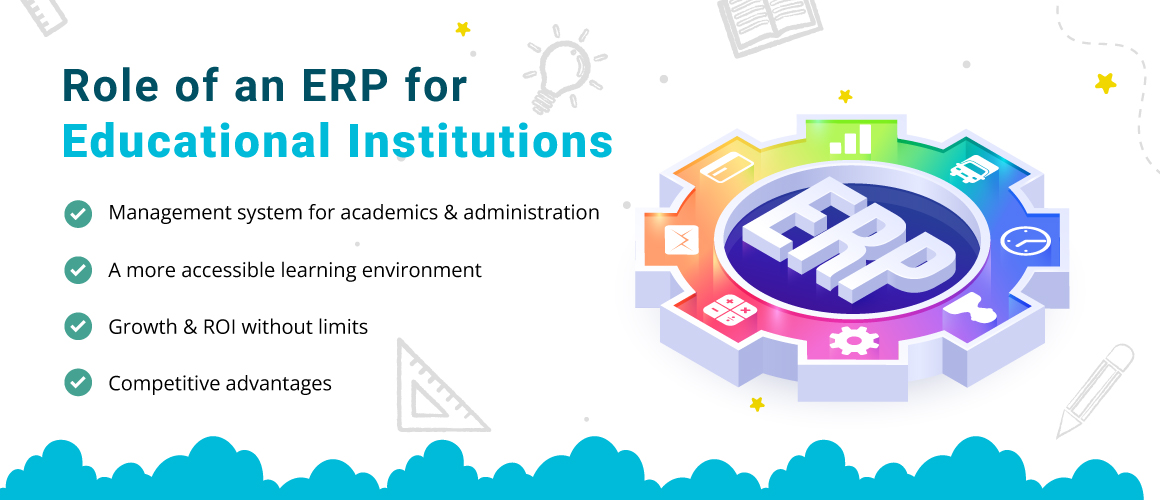Transforming Education: The Power of ERP Software Integration
Introduction
In an era where technology is rapidly shaping the
way we live and work, it comes as no surprise that the education sector is also
undergoing a significant transformation. One of the key driving forces behind
this change is the integration of Enterprise Resource Planning (ERP) software
in educational institutions. ERP software, originally designed for businesses
to streamline their processes, has found a valuable place in the academic
landscape. In this blog post, we will explore the various facets of ERP software
in education, its benefits, and the transformative impact it has on
institutions of all sizes.
Understanding ERP Software in Education
Enterprise Resource Planning (ERP) software is a
comprehensive suite of applications that help organizations manage and
streamline their various processes. In the context of education, ERP software
is customized to meet the specific needs of academic institutions, ranging from
primary schools to universities. These solutions are designed to integrate and
manage all aspects of educational administration, including student
information, faculty management, finance, human resources, and more.
Benefits of ERP Software in Education
1.
Efficient Administration: ERP software
in education facilitates seamless administration by centralizing data and
automating routine tasks. This ensures that administrative processes, such as
admissions, enrollment, and grading, are streamlined, reducing the workload on
staff and minimizing the chances of errors.
2.
Enhanced Communication: Communication
is key in any educational institution. ERP systems provide a centralized
platform for communication between students, faculty, and administration.
Features like messaging, notifications, and collaborative tools improve overall
communication efficiency, fostering a more connected academic community.
3.
Data Accuracy and Security: With
sensitive student and institutional data at stake, maintaining accuracy and
security is paramount. ERP software ensures data integrity and security through
role-based access controls, encryption, and regular data backups. This
minimizes the risk of data breaches and unauthorized access.
4.
Financial Management: Efficient
financial management is crucial for the sustainability of any educational
institution. ERP software helps in budgeting, expense tracking, and financial
reporting. Institutions can monitor their financial health in real time, making
informed decisions to optimize resource allocation.
5.
Student Performance Analytics:
Educational ERP systems provide insights into student performance through
analytics and reporting tools. This enables educators to identify areas of
improvement, tailor teaching strategies, and provide personalized support to
enhance overall student success.
6.
Streamlined Human Resource Management:
ERP software simplifies human resource processes, from recruitment to payroll
management. Automation of HR tasks reduces administrative burden, allowing
staff to focus on more strategic initiatives, ultimately contributing to a
positive work environment.
7.
Adaptability to Institutional Growth:
As educational institutions expand, the scalability of ERP systems becomes
crucial. ERP software is designed to scale with the growth of an institution,
ensuring that it remains an effective tool regardless of size.
Challenges in Implementing ERP Software in
Education
While the benefits of ERP software in education
are substantial, implementation does come with its set of challenges. Some
common hurdles include:
1.
Resistance to Change: Introducing new
technology often faces resistance from staff accustomed to traditional methods.
Proper training and communication strategies are essential to overcome this
challenge.
2.
Cost Considerations: Implementing an
ERP system involves upfront costs for software, hardware, and training.
Institutions need to carefully weigh these costs against the long-term benefits
and return on investment.
3.
Integration with Existing Systems:
Integrating ERP software with existing systems can be complex, particularly in
institutions with legacy software. Compatibility issues may arise,
necessitating careful planning and execution.
4.
Data Migration Challenges: Migrating
data from legacy systems to the new ERP can be time-consuming and error-prone.
Proper data cleansing and migration strategies are critical to ensure a smooth
transition.
Conclusion
In conclusion, the integration of ERP
software in education is a transformative step that enhances
administrative efficiency, improves communication, and contributes to the
overall success of educational institutions. While challenges exist, the
benefits far outweigh them, making ERP a valuable investment for schools,
colleges, and universities. As technology continues to evolve, embracing ERP
solutions in education will be crucial in preparing students for a digitally
connected and technologically advanced future. It is an investment not only in
administrative efficiency but also in the quality of education and the success
of the next generation.


Comments
Post a Comment